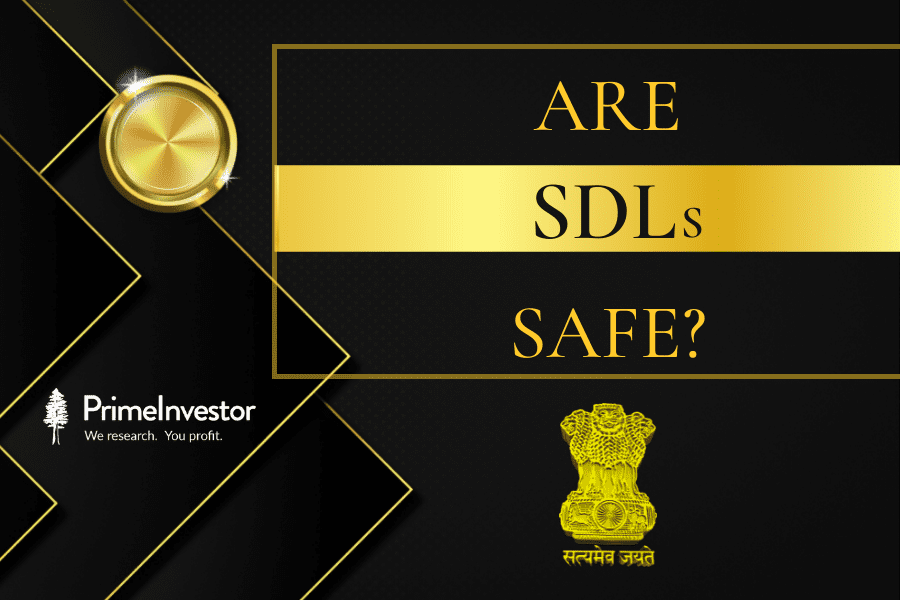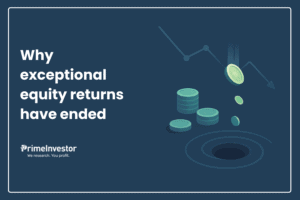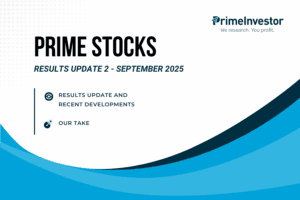In recent times, Indian debt investors seeking high yields have been flocking to many sub-optimal options – from NHIT NCDs with irregular payouts (Read our take on this) to exotic avenues like receivables and film financing.
But for investors seeking fairly attractive yields with high safety, we believe that a far simpler option exists in the form of State Development Loans (SDLs). Whenever we recommend SDLs though, our readers raise many queries about their safety and the difficulty of choosing them. In this FAQ, we try and address all of your niggling doubts about SDLs.

Q. With the States handing out so many freebies and State finances reported to be precarious, are Indian States headed the Sri Lanka way?
These fears are overdone. Despite alarmist media reports, Indian State governments aren’t much worse off than the Central government on their financial position. The finances of States did take a knock during the Covid years of FY20 and FY21. But indicators on the health of government finances, such as debt to GDP, gross fiscal deficit to GDP and revenue deficit to GDP have begun to normalise in FY22.
RBI data tells us that States’ aggregate gross fiscal deficit to GDP ratio, which was below 3% until FY19, rose to 4.7% by FY21 as Covid shrank tax revenues and raised States’ expenditure. But the ratio dipped to 3.7% in FY22 and is expected to moderate further to 3.4% in FY23. Aggregate State debt to GDP, at about 31% is expected to decline too.
Yes, these numbers are higher than the targets set by the FRBM (Fiscal Responsibility and Budget Management) Act for normal times. FRBM calls for a 3% fiscal deficit to GDP and 20% debt to GDP for States. But let’s not forget that the Centre let its fiscal deficit slip to 9.1% of GDP in FY21 and 6.7% of GDP in FY22, while its debt/GDP is 57%.
More importantly, neither the Indian Central government nor the States are borrowers from foreign governments or international agencies. To bridge their fiscal gaps, they mostly rely on market borrowings from Indian banks, insurance companies, EPFO and provident funds.
There is little risk of these lenders losing faith in the government to recall their loans or stopping fresh lending to the government to repay old loans, which foreign lenders may do. Sri Lanka’s problems stemmed from heavy reliance on foreign borrowings, high import dependence for essentials including food and fuel, runaway inflation and a shrinking economy due to the blow to tourism and exports during Covid.
Q. If the State finances have taken a knock, will there be delays or defaults on SDLs?
No. SDLs in India have not reported even a single instance of delay or default over the past many economic cycles. States’ SDL borrowings and their servicing are managed by the Reserve Bank of India, which has powers to use States’ share in Central revenues to service this debt in a timely manner. Key States (though not all of them), also maintain a consolidated sinking fund (CSF) and Guarantee Redemption Fund (GRF) with RBI to provide a reserve cushion against their market borrowings. These reserves give investors comfort that SDL payments will be made in time.
For all official purposes, SDLs are assumed to carry zero credit risk because Indian States, like the Central government, have power to impose taxes and raise revenues under the Constitution. SDLs count as part of SLR (Statutory Liquidity Ratio) holdings of banks and are considered eligible sovereign securities for insurers and pension funds. SDLs carry a zero-risk weight under Basel III norms for calculation of banks’ capital adequacy.
Q. If they are not risky, why do SDLs usually offer higher yields than Central g-secs?
The higher yields on SDLs are a premium demanded for their relatively low liquidity and wider demand-supply mismatch compared to Central g-secs. The Central g-sec market in India is far more liquid than the SDL market. Though insurers, banks and provident funds own SDLs, these investors do not actively trade on them and generally hold them to maturity. Central g-secs do see more active trading, with higher participation from active investors like MFs and FPIs (foreign portfolio investors).
In recent years, with State borrowings sky-rocketing, the supply of SDLs has also begun to match or even exceed Central g-sec issuances. With fewer participants in this market, the excess of supply over demand has increased SDL yields. But the spread that SDLs offer over g-secs is not constant. It has varied from 20-30 basis points to 70-80 basis points depending on demand-supply dynamics.
Q. Isn’t there very little information available on State finances?
This used to be the case. But the information flow has improved in recent years with RBI publishing more frequent data and research on State finances. This has made a numbers-based assessment of State finances more feasible for independent researchers like us. RBI’s latest report on State budgets can be found here. A recent risk assessment of States can be found here.
Q. SDLs were recently offering higher yields than AAA rated private sector corporates. Does this mean that SDLs are riskier than say, a PFC, REC or a HDFC bond?
No, as they are sovereign-backed securities. SDL yields spiking above AAA corporate bond yields is a market anomaly caused by over-supply of SDLs at a time when new AAA issuances were fewer.
Q. How do SDLs compare to bonds issued by State entities such as UP Power Corporation and TN Power Corporation?
Bonds from State power finance corporations are riskier than SDLs because they are not issued by the State itself and seek to fund State power utilities which tend to be lossmaking and indebted. SDLs also carry lower credit risk because of the RBI escrow mechanism.
Q. In the RBI auctions, SDLs from some small States and North-Eastern States offer better yields than others. Should I go for them?
It is better not to, for two reasons.
One, yields and spreads for SDLs in India often reflect premiums for illiquidity. Often smaller States offer SDLs with higher yields because their outstanding SDL amounts are quite small and they do not have high market liquidity.
Two, yield differentials between SDLs are very small and do not offer much of a compensation for one States’ finances being worse or better than the other. Therefore, one might as well choose large States with a better financial position that also offer more liquidity.
Q. How should I choose between SDLs?
To choose between SDLs, you should ideally look at whether the State’s finances are in a reasonable shape.
To assess whether State finances are in good shape, four key indicators are generally used
- States fiscal deficit/GDP ratio of upto 3.5%
- a debt/GDP ratio of upto 25%
- Interest outgo/revenue receipts ratio of about 10-15%
- Revenue deficit of upto 1%
If you find these above points, you know that they are States in better financial shape. But given that this is a post-Covid year, very few States meet all four parameters and one may need to give some leeway for future improvements. Usually, well-developed States with a large industrial or services base tend to be better SDL bets, as they have better revenue-generation capacity, bigger budgets and greater ability to borrow.
In its risk analysis of Indian States in June 2022, after considering various parameters such as current debt indicators, future borrowing needs, own tax revenues and the need for Discom bailouts, RBI had flagged Bihar, Kerala, Punjab, Rajasthan and West Bengal as the States most vulnerable to debt stress. For SDL investors who would like to play it extremely safe, it may be best to avoid these States while assigning top preference to the green-flagged ones below.
Q. Many States offer SDLs for long time frames such as 20 years, 25 years, 30 years and so on. Their yields are also higher. Should I invest in them instead of medium term SDLs for 5, 7 or 10 years?
Usually, SDLs offer very little secondary market liquidity. Therefore, it is best for retail investors buying them to prepare to hold them until their maturity date. The call on the tenure of SDL you should buy should be based on when you need the money. It is best to match the SDL’s maturity with your financial goal. If you are using SDLs simply to park the debt allocations in your portfolio, long durations of beyond 10 years may not be desirable because this will expose you to higher interest rate risk and capital losses before maturity (if you exit), in a rising rate scenario.
Q. Is the mutual fund route to SDLs superior to buying them directly?
Yes. When you buy SDLs through target maturity funds or passive funds, you get to own a basket of liquid instruments from large States. The indices that passive SDL and target maturity funds track usually select their constituents only from the large issuer States with better liquidity. Apart from diversification, a bigger advantage of taking the mutual fund route to investing in SDLs is that you get both compounding and taxation benefits. When you invest directly in SDLs, the interest gets paid out to you on a semi-annual basis and you will need to reinvest it to compound the returns.
SDL funds however will reinvest the interest to deliver a higher NAV. While the interest you receive from SDLs will be taxed at your slab rate every year, when you take the fund route, the interest gets capital gains treatment as it is accumulated. Your gains from SDL funds after a 3-year holding period will be treated as long term capital gains and taxed at 20 per cent after applying indexation benefits that will make up for inflation. This makes the MF route a very tax-efficient method to own SDLs.
Investing directly in SDL is more beneficial if you’re looking for regular income or are not in the high tax bracket.
You may find our previous articles on SDLs as an investment and MF investment options useful here :
What are SDLs or State Development Loans?
How to play the SDL bond opportunity?







18 thoughts on “Are SDLs safe? And other questions”
Madam, If we choose MF route for SDL with an objective of regular income for next 10-15 years, i guess we need to register SWP or timely withdrawal. & After 3 years, there is benefit of indexation with 20% tax (efficient than 30% on interest),
In my understanding, If we choose SDL through RBI portal, nothing will happen to capital and we continue to get interest. But when we choose SDL through MF route, Whether capital will get impacted due to M2M impact on NAVs & it is not the case in SDL, My question is, when we account all of this, which route will be beneficial (for higher tax slab 30%).
SDLs are mainly held thru target maturity funds which are more suited to lumpsum.goals than regular income. Yes you can set up SWP in such funds but then the NAV will have mtm fluctuations before maturity. SDLs held via RBI will give regular income but with high taxation. You can go for MFs if in higher tax brackets
Thanks for a very nice article.
Thanks Aarati for a well researched article.
Further, I think there is a provision in the constitution which allows Central Govt some level of control on States’ borrowings through SDLs, as log there is any outstanding loan the State has availed from the Centre.
I recollect reading this (link below/ paywall) in BS. If anything, this should enhance the strength of SDLs that there is Central Govt control on the issuance along with RBI.
https://www.business-standard.com/article/economy-policy/50-year-loan-likely-to-strengthen-centre-s-grip-over-states-debt-120101600066_1.html
Keep up the good work !
Thanks for sharing this!
Hi Aarati,
Thank you for this very informative article. When I checked the returns of most SDL MFs, their returns have been barely 1 to 2% in the last one year. Did the bond yields impact so badly in the last one year? Should one match the investment horizon with the maturity profile of these bonds so as to maximize the returns? Can retirees use SDL based MFs for regular income? Thank you.
Yes SDL target maturity funds hold 5-7 year SDLs which would have given low returns in a rising rate scenario. You need to match the maturity date of the scheme with your goal.
1) Does investing in SDL thru MF route give high liquidity like any other MF investment?
2) Can you suggest few MF-SDL investment schemes with high returns.
1. Yes, it does as you can sell any time with MFs.
2. Most funds have very little track record to give those with high returns. We go by yields and portfolio. Our reco is here: https://www.primeinvestor.in/four-passive-debt-funds-to-invest-right-now/ You will also find passive debt funds in Prime Funds.
Yes these funds are open ended. But to get benefit of high yields you need to hold till maturity. We have already written articles recommending funds we prefer..the links are provided in this one.
Interesting and insightful article. Does Prime Investor have a ranking of states or recommendation on states or is it upto the individual investor to do that and take their decisions ?
Thanks
Shankar
We make individual SDL recos for subscribers based on yields and tenors available.
Great Article with all the key FAQ’s addressed.
In terms of the key indicators of State’s Financial health, are Gujarat, Maharashtra, Odisha and Karnataka the top 4 best performing or am I missing some other state?
These four are the best placed right now.
Once again, a wonderful article detailing the filtration criteria for picking up the right SDLs! Kudos to the team!
Thank you!
Excellent Article and very timely. Thanks
Thank you!
Comments are closed.